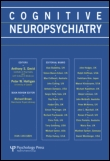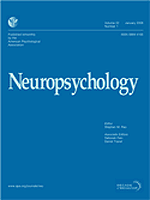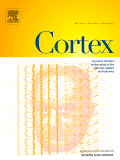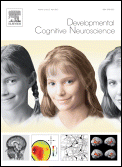
Cognitive Neuropsychiatry
Scope & Guideline
Elevating Discourse: High-Quality Research on Cognitive Disorders
Introduction
Aims and Scopes
- Cognitive Processes in Psychiatric Disorders:
Explores how cognitive deficits and alterations influence the manifestation and treatment of various psychiatric disorders, including schizophrenia, bipolar disorder, and dementia. - Neurocognitive Assessment and Methodologies:
Utilizes diverse methodologies, including neuropsychological tests, neuroimaging, and ecological momentary assessments, to evaluate cognitive functioning and its implications for psychiatric conditions. - Integration of Multidisciplinary Perspectives:
Encourages interdisciplinary research that combines insights from psychology, neuroscience, psychiatry, and social sciences to provide a comprehensive understanding of cognitive neuropsychiatry. - Focus on Hallucinations and Psychotic Experiences:
Investigation into the nature, causes, and implications of hallucinations and delusions across various psychiatric disorders, contributing to a deeper understanding of psychotic experiences. - Cognition and Emotion Interplay:
Analyzes the interplay between cognitive processes and emotional regulation, particularly in the context of mood disorders and anxiety, highlighting how these interactions affect overall mental health.
Trending and Emerging
- Interdisciplinary Approaches to Cognitive Neuropsychiatry:
There is a growing trend towards integrating perspectives from various disciplines, including neuroscience, psychology, and sociology, to better understand the multifaceted nature of cognitive and psychiatric disorders. - Focus on Hallucinations and Perceptual Experiences:
An increasing number of studies are dedicated to understanding hallucinations, including their cognitive underpinnings and emotional impacts, reflecting a heightened interest in their relevance across different psychiatric conditions. - Cognitive Profiles and Psychopathology:
Emerging research emphasizes the exploration of specific cognitive profiles associated with various psychopathologies, revealing how distinct cognitive patterns can inform diagnosis and treatment. - Impact of Social and Environmental Factors on Cognition:
Research is increasingly focusing on how social dynamics and environmental influences shape cognitive functioning and psychiatric symptoms, highlighting the importance of context in understanding mental health. - Neurocognitive Mechanisms Underlying Psychotic Experiences:
There is a trend towards investigating the neurocognitive mechanisms that contribute to psychotic experiences, including delusions and hallucinations, paving the way for more targeted therapeutic interventions.
Declining or Waning
- Focus on Traditional Neuropsychological Testing:
There is a noticeable decrease in studies solely relying on traditional neuropsychological assessments without integrating newer methodologies or interdisciplinary approaches, which may limit understanding of complex cognitive profiles. - Single-Dimensional Studies of Cognitive Functioning:
Research that examines cognitive functioning in isolation, without consideration of emotional, social, and contextual factors, is becoming less frequent, indicating a shift towards more holistic approaches. - Exploration of Non-Clinical Populations:
The focus on non-clinical populations regarding cognitive and neuropsychiatric symptoms seems to be declining, suggesting a move towards more clinically relevant research that addresses specific disorders. - Overemphasis on Diagnostic Categorization:
The tendency to categorize cognitive dysfunction strictly within traditional diagnostic frameworks is waning, as researchers increasingly recognize the need for more nuanced understanding that transcends rigid classifications.
Similar Journals

NEUROPSYCHOBIOLOGY
Integrating Perspectives: A Holistic Approach to NeuropsychologyNEUROPSYCHOBIOLOGY, published by KARGER, is a leading academic journal that has been at the forefront of exploring the intricate relationships between neuroscience and psychological processes since its inception in 1975. With both an ISSN of 0302-282X and an E-ISSN of 1423-0224, the journal is renowned for its rigorous peer-reviewed articles and significant contributions to the fields of Biological Psychiatry, Neuropsychology, and Physiological Psychology. Its impact is reflected in its esteemed Scopus rankings, standing out in the 92nd and 81st percentiles in their respective categories. With a commitment to advancing understanding in mental health and neurological science, NEUROPSYCHOBIOLOGY is classified in the Q3 and Q1 quartiles, making it a vital resource for researchers, clinicians, and students alike. Based in Switzerland, the journal embraces a holistic approach to psychological research, bridging gaps between theoretical frameworks and practical applications, thus promoting impactful advancements in the understanding of the human mind.
Explore the latest findings and theories with NEUROPSYCHOBIOLOGY, where your work can contribute to the evolving landscape of neuropsychological studies.

Journal of Experimental Psychopathology
Connecting Research and Practice in Clinical PsychologyJournal of Experimental Psychopathology, published by SAGE Publications Ltd, stands as a pivotal platform for advancing the understanding of psychological disorders and their underlying mechanisms. Established in 2015, this open access journal encourages a broad dissemination of research findings, adhering to its mission to foster innovation in the fields of Clinical Psychology and Psychiatry and Mental Health. With an established impact recognized in its Q3 quartile rankings for both fields as of 2023, the journal aims to bridge the gap between experimental research and clinical application. Researchers, professionals, and students are invited to engage with cutting-edge studies, all while benefiting from the journal's commitment to open access publishing since 2018, ensuring that knowledge is easily accessible to all. The journal’s office is strategically located in London, UK, serving a global academic community keen on exploring the complexities of psychopathology.

NEUROPSYCHOLOGY
Bridging Neuroscience and Clinical PracticeNEUROPSYCHOLOGY, published by the American Psychological Association, is a leading journal dedicated to advancing the field of neuropsychology and physiological psychology. With an ISSN of 0894-4105 and an E-ISSN of 1931-1559, the journal has established itself as a critical resource for researchers, clinicians, and students interested in the intersection of neuroscience and psychological practice. Recognized as a Q1 journal in its category for 2023, it holds a prominent position within the top quartile of neuropsychology journals, reflecting its rigorous peer-review process and high-quality publications. Covering a wide spectrum of topics from cognitive functions and brain-behavior relationships to clinical assessments and interventions, NEUROPSYCHOLOGY plays a pivotal role in disseminating significant research findings that enhance our understanding of the brain's complexities. Although this journal does not currently offer Open Access, it remains highly regarded for its contribution to the scientific community, as evidenced by its strong Scopus ranking of #34/76 in neuropsychology. As it marks over three decades of publication from 1990 to 2024, NEUROPSYCHOLOGY continues to be an essential publication for those committed to exploring and improving the field.

NEUROSCIENCE AND BIOBEHAVIORAL REVIEWS
Illuminating the complexities of the brain-behavior connection.NEUROSCIENCE AND BIOBEHAVIORAL REVIEWS, published by PERGAMON-ELSEVIER SCIENCE LTD in the United Kingdom, serves as a leading interdisciplinary platform for the dissemination of pioneering research and reviews in the realms of Neuroscience, Behavioral Neuroscience, Cognitive Neuroscience, and Neuropsychology. With an impressive impact factor reflected in its Q1 ranking across multiple categories for 2023, the journal is recognized for its rigorous peer-reviewed content that influences the advancement of scientific knowledge in behavioral and cognitive research. An essential resource for researchers, professionals, and students alike, the journal emphasizes the exploration of complex neural mechanisms that underlie behavior and cognitive processes. Despite being a subscription-based publication, the journal's extensive archive from 1978 to 2024 fosters a wealth of knowledge designed to inspire and facilitate future advancements within the field.

COGNITION & EMOTION
Advancing Insights into the Mind-Emotion ConnectionCOGNITION & EMOTION is a leading academic journal published by Routledge Journals, Taylor & Francis Ltd, focusing on the dynamic interactions between cognitive processes and emotional responses. Established in 1987, this esteemed journal has made significant contributions to the fields of Arts and Humanities, Developmental and Educational Psychology, and Experimental and Cognitive Psychology, consistently ranking in the top quartile (Q1) across various categories. Housed in the United Kingdom, COGNITION & EMOTION boasts a remarkable impact factor, underscoring its influence and importance in advancing psychological research and theory. While this journal does not offer open access, it remains a vital resource for scholars, professionals, and students seeking to deepen their understanding of emotional and cognitive phenomena. With a commitment to rigorous peer-reviewed research and innovative insights, COGNITION & EMOTION is essential for anyone aiming to stay at the forefront of psychological studies.

CORTEX
Fostering Interdisciplinary Collaboration in NeuroscienceCORTEX is a premier international journal published by Elsevier Masson, focusing on the cutting-edge areas of cognitive neuroscience, psychology, and neurology. With an impressive impact factor that places it in Q1 quartiles across multiple categories such as Cognitive Neuroscience and Neuropsychology, this journal serves as a vital resource for researchers, clinicians, and students alike. Established in 1964, CORTEX has continued to excel in disseminating high-quality scholarly work, offering insights that significantly enhance our understanding of the brain's functioning and behavior. Although not an open-access publication, it provides various access options to ensure the dissemination of knowledge is as wide-reaching as possible. As the field of cognitive psychology evolves, CORTEX remains at the forefront, fostering an environment for interdisciplinary collaboration and innovation. Researchers seeking to stay engaged with the latest advancements will find CORTEX an indispensable tool for their professional development.

Neurology International
Connecting Researchers to Transform Patient OutcomesNeurology International is a prestigious open-access journal published by MDPI that has been making significant contributions to the field of neurology since its establishment in 2009. With its ISSN 2035-8377, this journal is committed to disseminating high-quality, peer-reviewed research that addresses a wide range of clinical topics in neurology. Operating out of Basel, Switzerland, the journal holds a respectable Q2 ranking in the clinical neurology category as of 2023, indicating its influence and dedication to advancing scientific knowledge. Researchers and practitioners alike will find value in its comprehensive articles, which are readily accessible to a global audience, facilitating the sharing of innovative findings and clinical practices. As it converges towards 2024, Neurology International continues to provide a vital platform for scholarly discourse, aiming to improve patient outcomes and enhance our understanding of neurological disorders.

Developmental Cognitive Neuroscience
Advancing understanding of the brain's developmental journey.Developmental Cognitive Neuroscience is a leading interdisciplinary journal published by ELSEVIER SCI LTD, dedicated to advancing the field of cognitive neuroscience with a specific focus on the developmental aspects of brain function and behavior. Since its inception in 2011, this Open Access journal has continued to thrive, gaining significant recognition with a remarkable impact factor that places it in the Q1 category of cognitive neuroscience, ranking 22nd out of 115 in Scopus. This enhances its visibility and accessibility to a global audience, including researchers, clinicians, and students keen on exploring the intricate relationship between cognitive development and neurological processes. The journal embraces a wide array of topics, from the impact of early life experiences on cognitive outcomes to neurodevelopmental disorders, fostering an enriching platform for disseminating high-quality research and innovative findings. As it progresses towards 2024, Developmental Cognitive Neuroscience remains pivotal in shaping future research and understanding in the field.

Journal of Neuropsychology
Fostering Knowledge Exchange in Neuropsychological ResearchThe Journal of Neuropsychology, published by WILEY, is a premier academic journal dedicated to advancing the field of neuropsychology and its related disciplines. With a focus on behavioral and cognitive neuroscience, this journal presents cutting-edge research that informs our understanding of psychological functions and their underlying neural mechanisms. Operating with an impressive impact factor representative of its rigorous peer-review process, the journal has established itself within the Q2 and Q3 quartiles of multiple relevant categories, including Neuropsychology and Physiological Psychology. Researchers will find the ISSN 1748-6645 and E-ISSN 1748-6653 useful for academic referencing as they explore articles that span innovative methodologies and insights into neurological conditions. Published continuously since 2007, the Journal of Neuropsychology stands as a vital resource for professionals and students alike, fostering scholarly discourse and knowledge exchange in neuropsychological research.

JOURNAL OF THE INTERNATIONAL NEUROPSYCHOLOGICAL SOCIETY
Bridging Theory and Application in Clinical PsychologyJOURNAL OF THE INTERNATIONAL NEUROPSYCHOLOGICAL SOCIETY, published by Cambridge University Press, stands as a premier outlet for advancing the understanding of neuropsychology and its clinical applications. With a solid impact reflected in its Q1 categorizations in both Clinical Psychology and Neurology, alongside impressive Scopus rankings, this journal plays a critical role in disseminating cutting-edge research from 1995 to the present. It caters to a diverse academic community, including researchers, clinicians, and students, by providing a comprehensive platform for original research, reviews, and insightful commentaries that explore the intersection of neurological disorders and cognitive functions. Although not currently offered as an Open Access journal, its rigorous peer-review process ensures the highest standards of scholarly excellence. Engaging with the JOURNAL OF THE INTERNATIONAL NEUROPSYCHOLOGICAL SOCIETY means staying at the forefront of neuropsychological science and clinical practice.